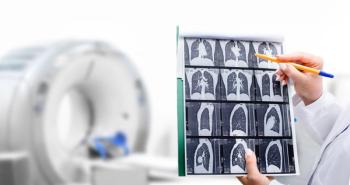
Taking Another Look at Nebulizers for Stable COPD
A recent review revisited the question of whether inhalers and nebulizers have similar effectiveness to manage stable chronic obstructive pulmonary disease (COPD).
A recent review revisited the question of whether inhalers and nebulizers have similar effectiveness to manage stable
The last time this issue was analyzed was in 2005; that review, cited over 450 times, concluded that the 2 devices are equivalent when used by patients trained in the devices. However, the review included just 2 studies, had small sample sizes, and only included lung function as an outcome measure, the researchers said.
In recent years, evidence has accumulated that inhalers, while convenient and portable, may not be used correctly by a majority of patients, leading to suboptimal medication delivery and compromised health outcomes, according to the authors. For instance, some patients may not have the cognitive or physical ability to work an inhaler device correctly, the authors noted.
Their current review,
The consensus group recommendations regarding nebulizer use in maintenance treatment came from 7 groups: the National Association for Medical Direction of Respiratory Care; British Thoracic Society Nebulizer Association of Palliative Care Medicine Project Group; European Respiratory Society (ERS) ERS/ISAM Task Force; American Thoracic Society (ATS)/ERS Statement on Research Questions in COPD; Indian National Allergy Asthma Bronchitis Institute and Chest Research Foundation; and the Global Initiative on Chronic Obstructive Lung Disease (GOLD).
Citing cost, convenience, portability of treatment, and other issues, the first 6 groups preferred the use of inhalers.
From its first report in 2001 until its 2010 report, GOLD also preferred inhalers; however, in 2010, GOLD made its first statement indicating support for nebulizers under certain conditions. In its last 4 reports, GOLD has not made any recommendation for a device one way or another, the authors noted.
The review also looked at 4 patient surveys. One found that 75% of patients reported better symptom relief with nebulizers than inhalers; a second showed that 80% of patients and caregivers favored a nebulizer over an inhaler; a third showed that 54% of patients preferred nebulizers over other inhalation devices; and a fourth found most had no preference, although patients with more severe COPD preferred a nebulizer.
When it comes to randomized clinical trials comparing nebulizers and inhalers, there is a paucity of high-quality studies, the authors said. In addition, the studies that have been conducted included patient training that is not typical in a real-world setting, and did not include outcomes such as quality of life.
They did note 1 observational study that compared inhalers to nebulizers regarding hospital readmissions for acute exacerbations of COPD. The retrospective analysis of patients hospitalized with AECOPD and then readmitted found that all-cause and COPD 30- and 90-day readmission rates were significantly lower for those discharged with a nebulizer compared with a dry powder inhaler, even though patients given nebulizers were older and worse lung function.
The authors argued that past research that has discouraged recommendations for nebulizers in stable COPD has been weak and may ignore potential patient preferences for nebulizers despite the challenges associated with them.
"We recommend well-designed comparative efficacy and safety trials with LABA/LAMA combinations, with or without ICS, administered by inhalers versus nebulizers to evaluate the role of nebulizers for maintenance therapy in patients with stable COPD," the authors concluded.
Reference
Terry PD, Dhand R. Maintenance therapy with nebulizers in patients with stable COPD: Need for reevaluation. Pulm Ther. 2020;6(2):177-192. doi: 10.1007/s41030-020-00120-x
Newsletter
Stay ahead of policy, cost, and value—subscribe to AJMC for expert insights at the intersection of clinical care and health economics.








































